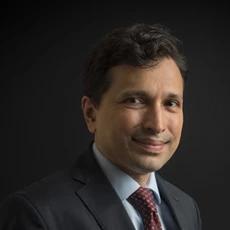-
Our Products
Our FundsOur High Return Funds
-
Self Care
Self-ServiceFind InformationWays To TransactPartner Solutions
-
Downloads
- Learnings
- About Us
-
More
-
Shareholders
-
Shareholders
-
Updates
-
-
Wealth Calculator
- Back
-
Shareholders
Understand risk to make it an ally in your investment journey
Nov 03, 2020
3 mins | Views 17394
Author: Maneesh Dangi, CIO – Fixed Income
“Nothing in life is to be feared, it is only to be understood. Now is the time to understand more so that we may fear less”.
These words of the famous scientist and pioneering researcher of radioactivity hold true even for the investment world. Knowledge and understanding is the first step towards overcoming any sort of fear, including those associated with investing. One such much quoted, often misunderstood, but rarely explained investment term is ‘risk’. Risk if understood well, and the knowledge applied appropriately, can result in significant benefits for an investor.
Understanding financial risk and how it is different
First and foremost in the world of finance and investment, risk is not uncertainty. Uncertainty is something we have no control of. We don’t know when and at what frequency it happens. But financial risk can be modelled or measured, and there is a pay-off or in other words there is a compensation associated with it. Unlike physical risk, financial risk is good if managed well.
However, most of us confuse or bring in our notions of physical risk into the financial market and that is where we make an error of judgement. It is important to distinguish between the two. In the physical world the way we see risk is say a risk of drowning in a river or the risk of an accident. Those are physical risks. There are no compensations for them. One cannot presume that one doesn’t know how to swim and yet jump in the river and expect that there will be compensation for that. In a sense, the loss of this bet is pre-ordained. Financial risk on the other hand has payoffs and the risk is built in or priced in, with most people aware of it. And therefore by taking or staying in that risk one gets compensated. It is a legitimate way to earn extra in financial markets by way of a risk premium. The reason why this compensation is available is because it can’t be said ante what will be your return, plus there will be years when one would face negative returns, only to be recouped in the subsequent years.
Not taking a risk is also a risk
If risk in investment was only about losing money, it would simply make sense to avoid that risk. But that’s not true. Risk has an associated compensation. Seeking no risk can dampen one’s return. Risk free assets invariably earn very little and barely beat inflation in the current world where financial repression is widespread.
Let me elaborate compensation with an illustration – you put money in the equity market, you know there is a risk of deep cuts. You will have atleast 3-4 times in a decade where you will have 25% cuts. So your portfolio will go down 25% 3 or 4 times. One third of the time of the last 10-20 years you have invested you would lose money in a year. Now these are the characteristics of the market. Yet equity for long periods of time may have the potential to earn more over traditional instruments. Now to earn that, one has to be durably invested in equity; but because there is a characteristic, to earn relatively more in equity one knows it may be achieved by staying in that risk. In financial risk as long as you diversify enough there is a compensation. Consider this as risk premium for more volatility and therefore look at how much risk premium you really want and how much you can tolerate.
After all these disclaimers there are legitimate ways to reduce risk but without necessarily sacrificing returns.
Understand the characteristics of the asset class: Each asset class has a profile of volatility and a risk premium attached to it. Understand the characteristics of each asset class in terms of what kind of risk premium it can deliver over long periods of time and what is the journey of delivering that risk premium. Market will compensate only to the extent that you have diversified well within that asset class. It is necessary to have broad representation of each asset class in a portfolio to realistically expect the risk premium. The key is to ensure your holdings are truly representative of the broad asset class and that you hold them for long periods of time.
Diversification: An investor’s key responsibility with respect to their capital is that it must diversify across asset classes, more importantly it is a free diversification available (across funds/fund houses). Know all the asset classes instead of focussing on just one or one type within that. Market will give you the risk premium only if you adhere to the principles of diversification and investing in a representative set of each asset class that truly represents the entire market. As long as I am truly well diversified and I understand the drawdown nature then I should logically expect that risk premium to be delivered in my portfolio. So therefore if it is fixed income then one needs to be in both duration and credit strategy funds; in equity one needs to have exposure across market caps.
Rebalancing the risk portfolios: Rebalancing from time to time at a certain interval makes sense. The idea isn’t to take profit off, but to allow to make large investments when markets fall off. And they always do. Irrespective of what fund managers tell you, Equity markets are bound to fall by 25% a couple of times in a decade and 40-50% once in a decade. One must have capital to dial risk in such times. Now, this is easier said than done. I have followed this simple rule of investing in equities: I begin to shave off my equity allocation when it’s 100% pricier vis-à-vis bond fund return from its bottom. It allowed me to add equites in 2013 & in March - April 2020.
Don’t cut risk too fast, too early: We often cut risks too fast especially when they are in the money. I made a mistake in cutting equity risk too early (in early 2016). In this cycle, I plan to improvise my framework to avoid quick selling and rebalancing. In this cycle, I will trim equities slowly only once they get bubblier or some macro signals start to hint at tougher times for equities (Indian bond >8% & Crude>80). In other areas like credit, one could cut positions when credit has been in a good 5 year cycle. Credit crisis is bound to return every 5 years. On rates, I use simple framework of mean reversion. If rates are one standard deviation lower from long range mean (10 year moving average), I like to go underweight long bonds. Vice versa.
Avoid the risk of ruins: Avoid the risk of ruins: Risk of ruin is basically the amount of capital that you are willing to risk before you feel you need to stop trading. It’s called point of ruin or maximum drawdown. Irrespective of your view, you should not buy any asset class that poses the risk of ruin. Risk of ruin must be avoided at all costs – never place all eggs in one basket, where the volatility of that basket can ruin you financially. No investor should ever invest in any asset which has large drawdown to the extent that it ruins them and they cannot get to trade again or it disallows risk taking. If you put all your equity allocations only into small caps, if you put all your fixed income allocations into credit risk funds - you are running the risk of ruin. Ensure that your holdings in each asset class are truly representative of the asset class and not just one subset of it. Even if fund houses tell you that they have never lost money in a certain category, the nature of market cycles are such that someone or the other will have to deal with it in a particular cycle. To avoid any assumptions or presumptions, as an investor it is imperative to diversify across asset type, fund categories, sub categories, and even fund houses.
Panic riddance: Panic is generally a sentiment when information is already out and unfortunately when it’s already out, it’s priced in. We are far more affected by loss aversion. Understanding how each asset class really behaves over cycles is the only way to rid oneself of panic when volatility hits the asset class. You should be able to sleep well even during turbulent times because you know this is the nature of the asset class. Every individual has to get a friend who tells her that this is the kind of risk you can take and she herself has to understand this and the drawdowns involved. Because when the risk actually materialises, is when this feeling of ruin creeps in, people get so emotional that precisely at the wrong time they want to exit that risk. Knowledge and understanding of the inherent risk in asset classes and how they offer risk premium over a period of time will reduce panic selling.
You know your limits better: Don’t let anyone tell you how much of your exposure should be in any asset class or its sub categories. Every person has his/her risk limits. You can train yourself. Investing is a lifelong exercise. The only thing you should try is to start early. So that people get exposure to risk/return matrix and build certain models of risk taking. Someone who has lots of money, in next few years may have to get her child married. Given that in any year, a big drawdown could happen, it will be wrong to assume statistical probability and get her to invest only in equities.
Every person has to learn and figure out how much risk can she take. Life is finite which is why the portfolio has to be constructed for each individual basis their requirement and ability to stomach risk.
The views and opinions expressed are those of Maneesh Dangi, CIO – Fixed Income and do not necessarily reflect the views of Aditya Birla Sun Life AMC Ltd (“ABSLAMC”) /Aditya Birla Sun Life Mutual Fund (“the Fund”). ABSLAMC/ the Fund is not guaranteeing/offering/communicating any indicative yield on investments. ABSLAMC or any of its officers, employees, personnel, directors make no representation or warranty, express or implied, as to the accuracy, completeness or reliability of the content and hereby disclaim any liability with regard to the same. Recipients of this material should exercise due care and read the scheme information documents (including if necessary, obtaining the advice of tax/legal/accounting/financial/other professional(s)) prior to taking of any decision, acting or omitting to act. Further, the recipient shall not copy/circulate/reproduce/quote contents of this interview, in part or in whole, or in any other manner whatsoever without prior and explicit approval of ABSLAMC.
Mutual Fund investments are subject to market risks, read all scheme related documents carefully.
 Our Experts
Our Experts
 Tools and Calculator
Tools and Calculator
 RSS News Feed
RSS News Feed
 Archives
Archives
Close
Hover to Zoom





 1800-270-7000
1800-270-7000









Thank You
Message will change according to your requirement.